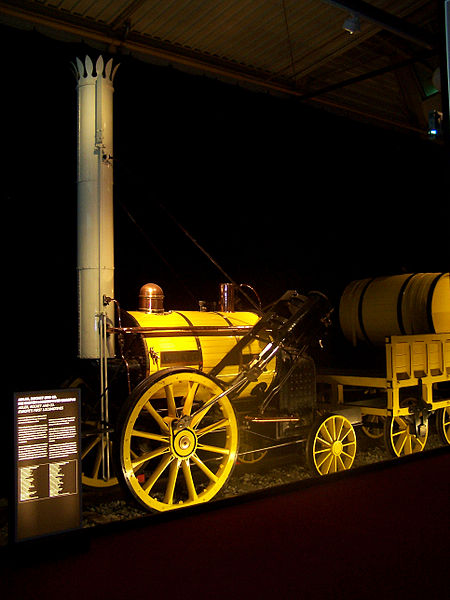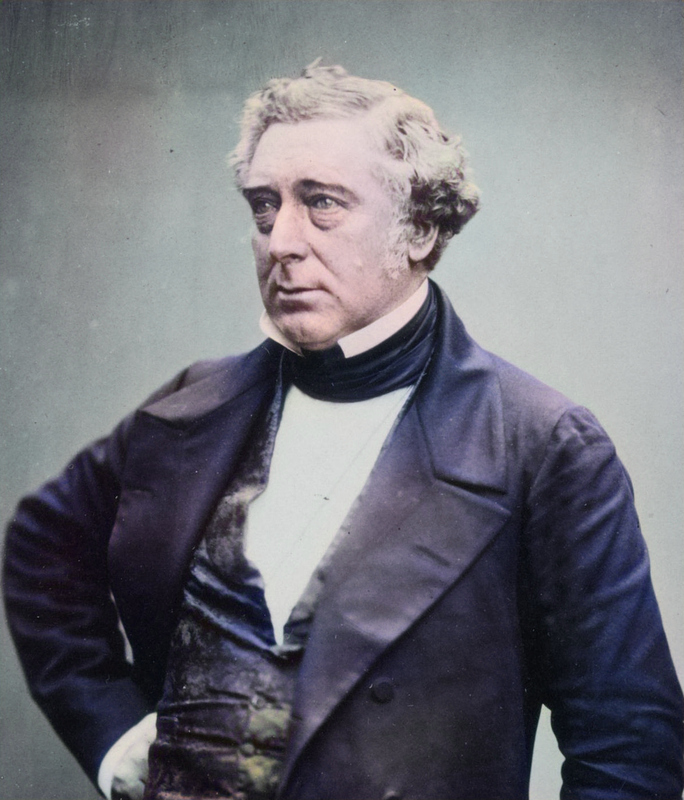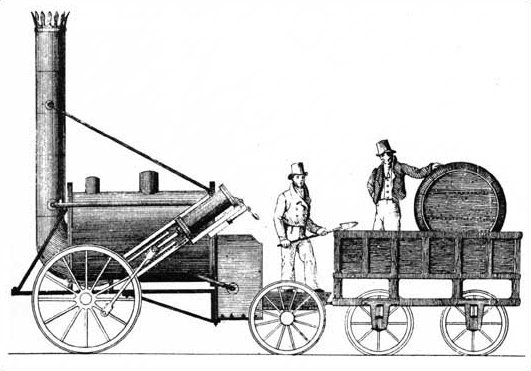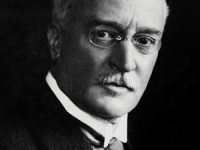
Replica of the Rocket in its original condition in the Transport Museum in Nuremberg during the exhibition “Adler, Rocket and Co.”, image: Urmelbeauftragter , CC BY-SA 3.0, via Wikimedia Commons
On October 8, 1829, George Stephenson‘s steam locomotive ‘The Rocket‘ won The Rainhill Trials, an important competition in the early days of steam locomotive railways, run in Rainhill, Lancashire (now Merseyside) for the nearly completed Liverpool and Manchester Railway.
“George Stephenson told me as a young man that railways will supersede almost all other methods of conveyance in this country — when mail-coaches will go by railway, and railroads will become the great highway for the king and all his subjects. I know there are great and almost insurmountable difficulties to be encountered; but what I have said will come to pass as sure as you live.”
— John Dixon, quoted by Samuel Smiles, Life of George Stephenson (1875)
The Origins of the Rainhill Trials
The Liverpool and Manchester Railway was about to get finished, it was the first twin-track inter city passenger railway and the operators did not know whether to use steam engines or locomotives to pull the trains. The directors of the Liverpool and Manchester Railway had originally intended to use stationary steam engines to haul trains along the railway using cables.They had appointed George Stephenson as their engineer of the line in 1826, and he strongly advocated for the use of steam locomotives instead. Therefore, the Rainhill Trials were held as an open contest with a prize of £500 for the winner. The judges came from the field of engineering with lots of experience in locomotives and their designs.

Photograph of Robert Stephenson published in Photographic Portraits of Living Contemporaries, July 1856
The Competitors
To figure out the most suitable machine, there were several tasks the locomotives had to complete considering weight, performance, and endurance. There were five locomotives starting in the competition and only one could complete the trials. The first drop-out, Cycloped built by Thomas Shaw Brandreth, was powered by a horse on a drive belt and after an accident, the horse fell through the floor of the engine. The second dropped out because of not reaching the required 10 mph and the third suffered from a cracked cylinder. The fourth drop out was a surprise, the Novelty built by John Ericsson and John Braithwaite counted as the favorite due to its low weight and its high speed, but suffered a severe boiler damage.

A contemporary drawing of Rocket
The Winner
The various tests began on 6 October 1829 and lasted until 14 October. The winner was clearly the Rocket locomotive and the only to complete the trials. It achieved an average of 12 mph and weighed 13 tons. Stephenson and company was given the promised prize money as well as the contract to produce further locomotives for the Liverpool and Manchester Railway. Overall, Stephenson was able to deliver eight Rocket steam locomotives for the Liverpool-Manchester line. The Sans Pareil of Timothy Hackworth, whose cylinder exploded during the competition – a frequent defect in many locomotives at the time – was also taken over by the Liverpool-Manchester Railway, where it served longer than the Rocket, which had been shut down for a few years. The Novelty had the lowest weight, the lowest consumption of coal and reached the highest speed. However, since it, like the Sans Pareil, could not pass the prescribed test track due to technical problems, the victory was awarded to Stephenson and his Rocket.
Innovations
Several innovations were constructed on the Rocket. First of all, it used single pair driving wheels, multiple boiler fire-tubes, and blast-pipes causing the locomotive to be extremely light as well as fast and stable. From 1830 to 1834, the Rocket served on the Liverpool and Manchester Railway and was donated to the Patent Office Museum in London in 1862. In the early days of locomotive construction, there were many technical solutions with regard to the arrangement and design of the boiler and cylinders that seemed exotic today. On the Rocket, the steam boiler was already very similar to the later locomotive boilers. The water chamber was closed in the cylindrical pressure vessel by two vertically inserted pipe walls connected by 25 pipes in which the flue gases could flow from the fire box to the chimney and thus heat the water. The idea of using this boiler is said to have been inspired by Henry Booth, Managing Director of Liverpool and Manchester Railway. The firebox already had a water jacket to take advantage of the radiant heat of the fire. However, this standing boiler was still separate from the long boiler and had its own water and steam rooms, which were connected to the corresponding rooms of the long boiler by two pipes for the water and one for the steam. In addition, the original version of the locomotive did not have a smoke chamber. Further equipment of the boiler were the two non-closable safety valves required in the competition documents, as well as a blow pipe, which ignites the firing with the exhaust steam flowing out of the steam cylinders, by blowing this into the chimney with a nozzle, so that a negative pressure develops there. The chimney was designed to be as long as possible in order to ensure that the flue gases rising in it fanned the fire well. The boiler was not fired with coal, but with coke. This variant avoided the black smoke, which was unpopular among the population, and allowed the locomotive to burn its own smoke in compliance with the competition requirement.
Timewatch Rocket and its Rivals, [4]
References and Further Reading:
- [1] The Rainhill Trials at Wikidata
- [2] Stephenson’s Rocket on the Sciencemuseum Website
- [3] More articles on the history of railways and locomotives at SciHi Blog
- [4] Timewatch Rocket and its Rivals, 2002 BBC Documentary from the ‘Timewatch’ series., Henry Kelsall @ youtube
- [5] The Engineer magazine examines the differences between the 1829 and 1830 Rocket, as reprinted in Scientific American Supplement, No. 460, 25 October 1884.
- [6] Dawson, Anthony. Locomotives of the Victorian Railway: The Early Days of Steam. United Kingdom, Amberley Publishing, 2019.
- [7] Bailey, Michael (2000), The Engineering and History of “Rocket”: A Survey Report
- [8] Carlson, Robert (1969). The Liverpool and Manchester Railway Project 1821–1831. Newton Abbot: David and Charles.
- [9] Timeline of Early Steam Locomotives, via DBpedia and Wikidata






Pingback: Whewell’s Gazette: Year 3, Vol. #08 | Whewell's Ghost